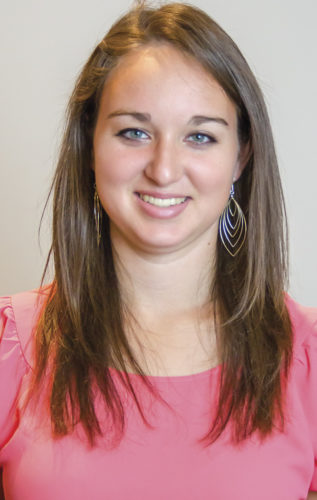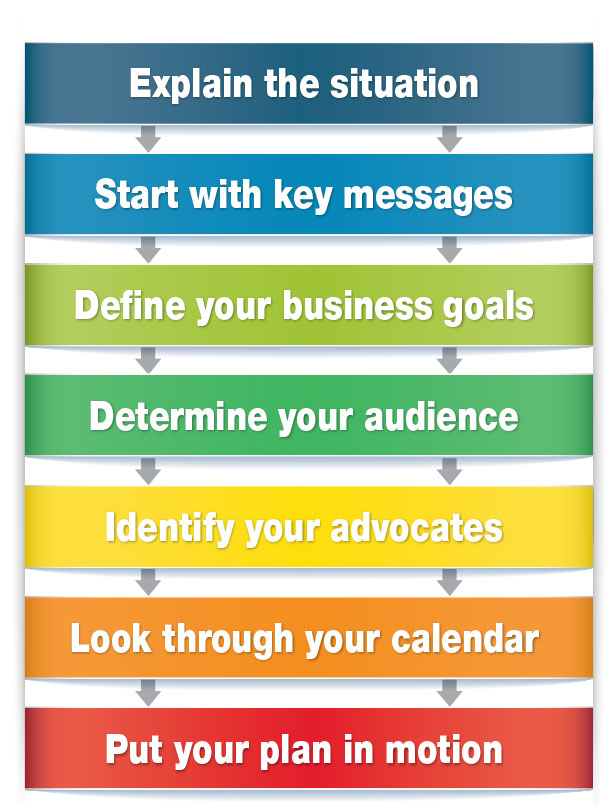It is no secret that in the last few years consumers have been asking more and more questions about where their food comes from. Unfortunately, most of them have little knowledge of agriculture, or a skewed understanding of it, but desire to learn more.
For producers, this is an excellent opportunity to talk with consumers and tell their story, the real story of how their milk, cheese, yogurt and other dairy products are produced. Still, simply knowing this opportunity is out there is of little value without a clear plan of action.
Analyzing the situation and the potential opportunities to communicate with the local community not only helps to illuminate the bigger picture but also gives direction to the plan. Writing it down helps to ensure the plan is carried out successfully. This is because it is no longer a mere idea; it is a set plan with deadlines and to-do lists. But why make a plan? Why go the extra mile and put a face on the dairy industry?
Putting a face on something makes it personal. It creates trust between the producer and the consumer and gives the consumer more confidence in the dairy industry. This trusting relationship is how the producer receives their social license to operate.
Without trust, the consumer will seek to rescind this license and control food production through additional rules, regulations and laws. The consumer needs food and desires animal products, but they want animals raised in a humane environment.
As we have all seen in the past several years, they will work to pass regulations on this if they deem it necessary. It is therefore crucial that producers and those in the agriculture industry tell the true story of agriculture and assure consumers that animals are indeed raised and cared for in a humane manner.
Not all communication plans will be elaborate or require a large amount of time or effort. Often something as simple as communicating with the local community about things that will affect them, like farm tours or spreading manure or making a social media page for sharing pictures or telling stories about what daily life is like on a dairy operation, will still have a positive impact.
Other operations may choose to become a major face in the community by sponsoring a little-league team or hosting a large-scale community event on their dairy. The point is to tell your story and develop a relationship with the public. Whatever the situation, here are a few key steps for creating a plan that works for your operation.
Explain the situation
Identify what issues and challenges are currently facing the dairy industry as well as the barriers that have prevented you from putting a communications plan in place before. Once these problems have been identified, write down solutions to them. Assess your operation and decide on the story you would like to tell consumers as well as what steps you could take to be a good neighbor to your community.
Start with key messages
Determine the main point you would like to communicate. Develop key messages or branding statements that will help to get your point across. These messages should be clear and concise statements that tell the consumer who you are and what you stand for. These statements should also be communicated to your employees so everyone connected with the dairy is presenting a united front.
Once your have written down your key messages, ask yourself these questions to help you refine your statements.
- Can a complete, positive thought be stated in 10 seconds or less (sound bite)?
- Have you taken out the jargon only farm-related people would understand?
- Have you used words that sound pleasant and evoke positive images?
- Can they be backed up by facts, statistics or anecdotes?
- Have you related the message to the non-farm audience?
Define your business goals
A communications plan does little good if it is never put into practice. On the other hand, trying to do everything at once is overwhelming and not feasible. Your goals should be detailed and set a clear course of action for the next year or two – or however long you are going to take to enact your plan.
For instance, don’t just write down, “We’re going to invite the community out for some farm tours this year.” Instead write something like, “Between June and August, we will host two farm tours for the community and one for the local little league.” This gives you a set goal. You have a plan to work toward. To help with this, just think “smart” or specific, measurable, attainable, relevant and time-bound.
Determine your audience
In other words, who are you trying to reach? Your immediate neighbors, friends, community and county residents, online and social media audiences, or all of the above? The question you need to ask is: Who is in your circle of influence and how far out do you want to reach?
Would it be best to open your dairy up for a tour from the local elementary school, or maybe your operation is more rural and social media, YouTube or a blog might be a better avenue? Maybe you live in an area where a farm-to-table dinner would interest several people? The point is to figure out what works for you and will appeal to the community you live in and make a plan that will cater to that.
Identify your advocates
Is there someone on your dairy who is particularly good at talking to people, planning events or communicating on social media? Maybe there are other producers in your area who might want to partner with you on some advocacy projects? Would your neighbors or members of your extended family be interested in working with you?
What about the rest of the industry? Are there industry leaders, suppliers, vendors, specialists, university and extension professionals or elected officials who might be willing to be an advocate on this and help you further your message? Once you have your advocates identified, work with them to get their input on the best ways to reach your intended audience.
Look through your calendar
Identify seasonal activities you can host on your farm. Look at activities you do which people might enjoy seeing. Maybe in the spring you could host a tour that focuses on your calf operation and highlights the care you give to these little babies, or in the fall you could take visitors on a hayride through your fields and show them the hard work that goes into feeding dairy cows.
You should also schedule a time to update and plan the activities. Don’t just leave them for whenever you have time. Make them a part of your to-do list.
Put your plan in motion
Now that you’ve generated ideas for what your plan might look like, analyze it, determine your course of action and do it. One way to help with this is to use “SCAMPER.”
- Substitution (What can be added or subtracted?)
- Combine (How can I combine X with Y?)
- Adapt (What if we change this?)
- Modify or magnify (Don’t think too small, what if you work with others?)
- Put to other uses (Where else could you use it?)
- Eliminate (What’s the extra that could go?)
- Reverse (Think backwards first, with the end in mind)
Use your resources and play to your strengths on this. If you live in an urban area where you have plenty of consumers who want to tour your dairy, do that. If you have a niece who is an avid blogger, invite her to spend the day with you and ask her to write about her experience. The point is to get out there and show the world that the food they consume every day comes from healthy, well-cared-for animals. PD
The information in this article was originally presented by Renea Heinrich, a counselor at Morgan Myers, as part of the Professional Dairy Producers of Wisconsin’s Dairy’s Visible Voice workshop series. This article is part one of a two-part series on the program.

Jenna Hurty
Editor
Progressive Dairyman







